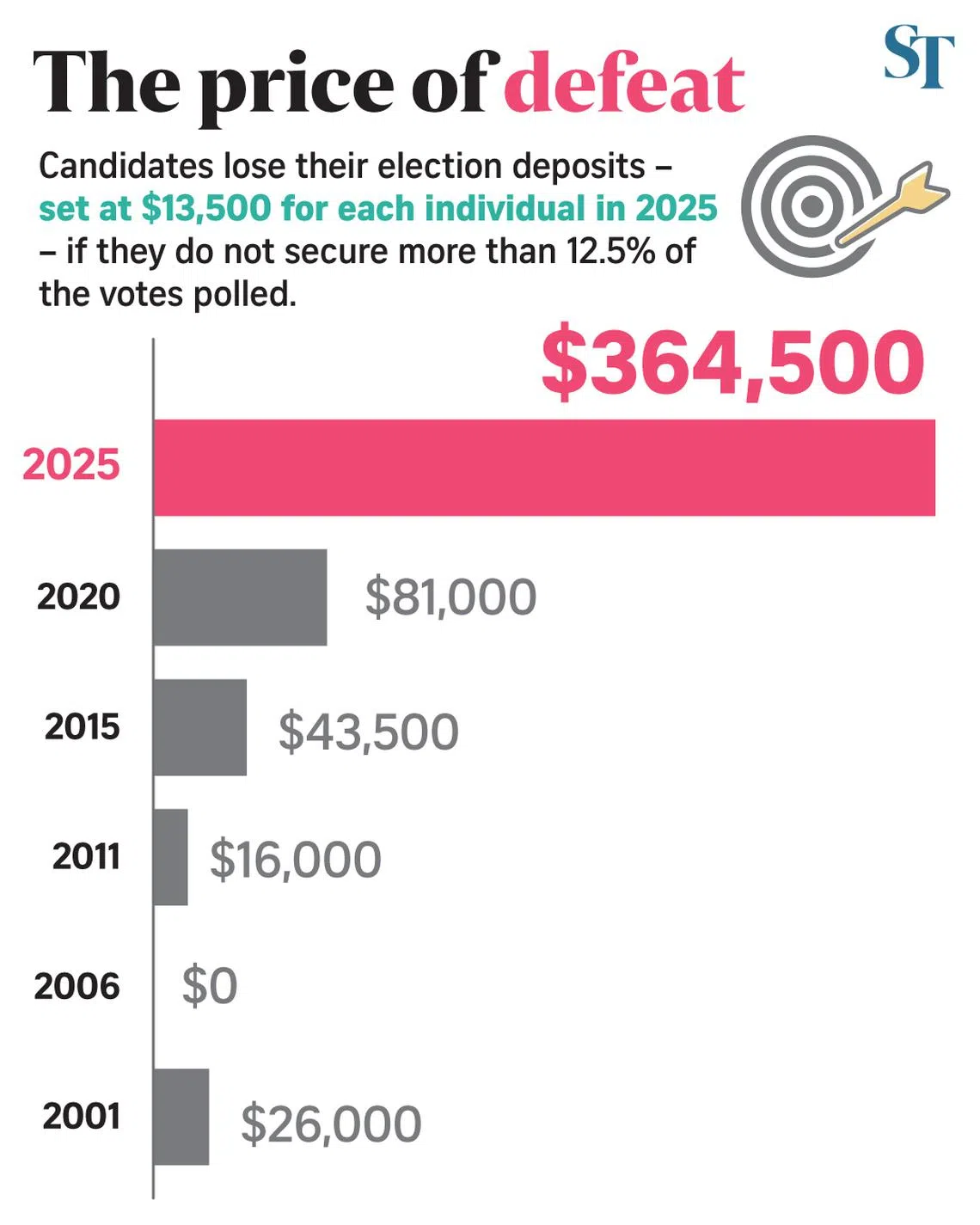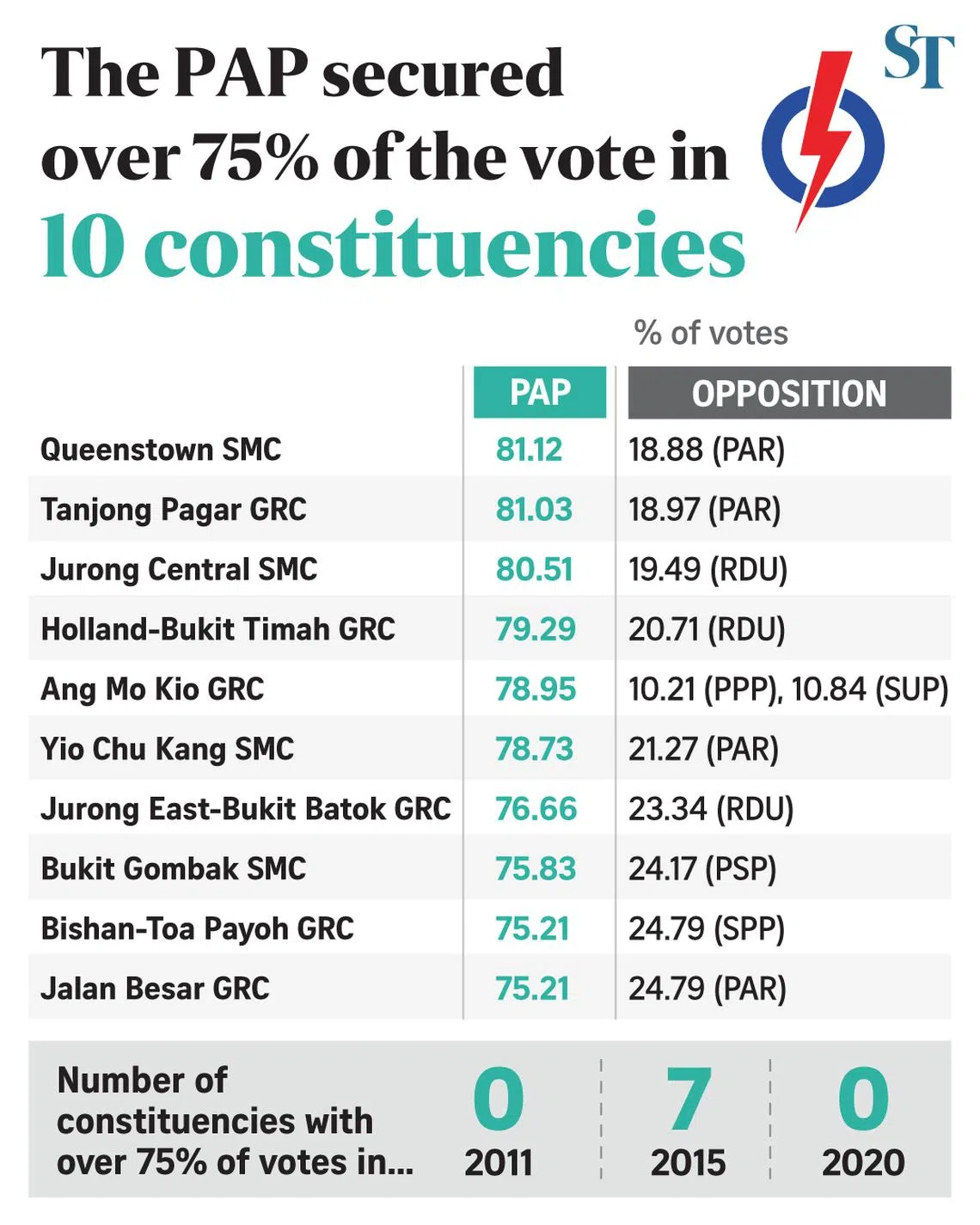- Joined
- Jul 25, 2008
- Messages
- 15,262
- Points
- 113
Inside the PAP’s GE2025 playbook – and why rivals should take notes
Seeking to salve the sting of defeat is understandable, but opposition-leaning voices should closely study why the PAP’s GE2025 strategy worked.

Bhavan Jaipragas

PAP supporters cheering at Bukit Gombak Stadium after the results were out on May 4.ST PHOTO: SHINTARO TAY
UPDATED May 08, 2025, 12:06 PM
Victory has a thousand fathers, as they say, while defeat is an orphan.
Yet for Singapore’s ruling PAP, one of the world’s most successful political parties, such is its reality that even when a strong win materialises, there is every chance it is dismissed as not that big a deal. Why praise the political equivalent of a serial championship-winning team for securing another trophy?
Hence the curious commentary among pockets of the political intelligentsia over the past week suggesting that the 65.57 per cent mandate Prime Minister Lawrence Wong and his party secured, while stemming further Workers’ Party inroads, was somehow overhyped – merely to be expected, a “status quo result”.
Commentators advancing this argument claim the vote share increase stemmed mainly from the weakness of most opposition parties bar the WP, rather than any genuine fillip for the PAP – let alone constituting a landslide.
But this reasoning rings peculiarly inconsistent: Wasn’t the 2015 election, unanimously accepted as the last major PAP landslide, also contested against similarly weak political parties across the board, bar the WP?
Those high barometers of recent electoral success that such analysis typically venerates – including the regular high-margin victories of former PAP stalwart and current President Tharman Shanmugaratnam – were likewise secured against weak opponents. Are these, too, suddenly unimpressive?
This is all the more notable considering the PAP entered GE2025 carrying substantial baggage: widespread concerns about living costs and a troubled electoral term marked by unprecedented incidents – the first-ever imprisonment of a former Cabinet minister and the dual resignations of both the House Speaker and an MP following revelations of their extramarital affair.
The issue here is that, amid the flood of post-election analysis, some commentary appears self-serving, deliberately downplaying the results. Yet if the intention is to advance the opposition’s cause or salve the sting of defeat, such an approach is counterproductive. Study, instead, why the PAP won so handily: lessons from an opponent’s success remain valuable lessons nonetheless.
This isn’t about declaring the behemoth is indeed a behemoth, and certainly the PAP does not need external validation – that is not the point here. Rather, it’s about the opposition and their adjacent commentators developing a clear-eyed assessment of voter priorities and effective campaign strategies demonstrated in this election.
Building goodwill
At this stage, two factors behind the PAP’s strong mandate are familiar: global jitters – read: Hurricane Trump – and a year-round ground game.The ground game aspect is somewhat downplayed in commentaries, written off as mere “machine politics” that comes with the PAP’s size, access to resources and 66-year incumbency.
But this misses a crucial insight: day-to-day work helping residents, treating municipal issues not as mundane or trivial parts of an MP’s job but as important priorities, and building strong connections with constituents creates electoral support. MPs who establish themselves as familiar faces rather than distant figures requiring deference accumulate the goodwill that translates into votes at the ballot box.
The PAP has long understood this, with present-day MPs like Mr Liang Eng Hwa, Ms Tin Pei Ling, Mr Baey Yam Keng and Ms Denise Phua, among others, making their names as grassroots MPs through such service.
WP MPs clearly recognise this too, evident in how frequently they highlighted municipal-level work and estate upgrading plans in their rallies, even while pressing home their primary message about offering a balance to PAP dominance in parliament.
Former PAP MP Inderjit Singh tells me he saw conscientious and consistent grassroots work, as well as efforts to upgrade estate environment, as crucial to maintaining voter support.
Singaporeans essentially want problem-solvers as their MPs, whether at the municipal level or for those with more granular personal issues.
“It goes a long way in building goodwill and support... grassroots work is an important issue that many ignore,” Mr Singh told me. He emphasised that it is not just national issues that matter to voters.
One of the first polls on the elections, released this week by Blackbox Research, confirms this view, noting that respondents indicated that the PAP had a “decisive advantage” when it came to ground campaigning and policies.
This poll, conducted on April 29 and 30 with 500 Singaporeans representative of national demographics, revealed that the PAP enjoyed a 16 percentage-point advantage over the WP in local campaigning effectiveness.
Blackbox’s founder, Mr David Black, told me the ground game proved “all important” for the PAP this time – especially since the ruling party hadn’t fully deployed its well-oiled machinery during the 2020 pandemic-restricted polls.
This time, the PAP made that advantage count. Municipal and national upgrading programmes, like the long-running Estate Upgrading Programme, designed to enhance older private estates, resonated significantly with voters.
As Mr Black, a long-time observer of Singapore elections, noted: “You see MPs talking about these constantly in their outreach to residents.”
Leaving nothing to chance
Beyond year-round grassroots work, the nine-day hustings showed that one slogan will not carry a campaign. You need a supporting storyline to plug the gaps – and both the delivery and the messenger matter.The Blackbox poll offers some insight into how this played out, and how the PAP achieved its objectives despite certain chinks in its armour.
The poll showed that the opposition’s central message that Singapore needed checks and balances in Parliament actually struck a chord with voters, and 56 per cent of respondents said they agreed with it compared with the 44 per cent who supported the PAP’s central message that voters needed to keep the ruling party strong amid uncertainty in a changing world.
But the PAP, seeming to recognise this vulnerability, shrewdly augmented its primary message with another: that voters should stick with the ruling party, whose track record they knew so well. That Brand PAP was tried and tested. This leave-nothing-to-chance approach was then coupled with the strategic deployment of politicians with the deepest political capital, PM Wong and Senior Minister Lee Hsien Loong, in the at-risk constituencies of Punggol and Tampines GRCs.
While the extent of SM Lee’s involvement in campaigning, especially in the second half of the nine-day period, raised eyebrows – with some questioning why a former prime minister was so extensively involved – Mr Black noted that the use of “heavy artillery” in marginal seat campaigns around the world was commonplace.
Mr Lee and Mr Wong conducted walkabouts in both constituencies and held rallies there on the last day – Mr Wong at Punggol and Mr Lee in Tampines – pressing home the PAP’s central messages.
Mr Black said the polling clearly showed that SM Lee “was pivotal during the last days, and he impressed voters during the campaign”.
There is an argument to be made here, then, that having the superior narrative alone is not enough. Good arguments also need heavy hitters to land their punch – a lesson the PAP clearly understood in its strategic deployment of its most formidable campaigners.
As Mr Black put it to me, the opposition’s political balance message was “highly salient and registering, especially with male voters. But this did not impact voting intention”. He likened the trend to store browsing without buying.
Said the veteran pollster: “Ultimately, you have to make it meaningful and give people a compelling reason to switch. Either you find the current model no longer any good, or you show how much better your product is. Neither was the case this time.”
GE2025’s resounding message
None of this is to say that the PAP’s strategy was flawless, or that the opposition, principally the WP, was fundamentally flawed.It would be remiss here not to acknowledge opposition parties’ consistent assertions about structural impediments they face: among them, the short lead time between Electoral Boundaries Review Committee reports and election writs, perceived opacity in the EBRC’s deliberations, and the People’s Association’s role bolstering the PAP’s retail politics advantage.
The PAP naturally rejects any notion of an uneven playing field. Yet while navigating these challenges, opposition parties might benefit from studying what resonates with Singaporean voters.
Looking at how the PAP succeeds, rather than attributing the ruling party’s wins solely to structural advantages, could offer valuable insights. And the commentariat? For the most cynical elements, a touch more curiosity about the mechanics of victory would serve better than predictable dismissals of the PAP’s electoral strength.
The evidence suggests consistent grassroots engagement throughout the electoral cycle yields dividends for any political entity. Those who can demonstrate tangible problem-solving abilities and articulate compelling visions will see voters value them. That is this election’s most resounding message.
















